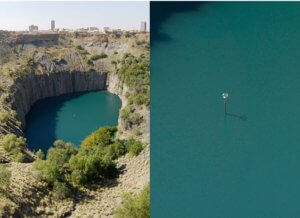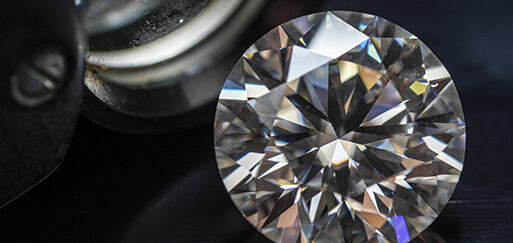In 2015, photographer Dillon Marsh undertook a fascinating project to demonstrate visually just how much natural diamond has been extracted from a diamond mine during its entire lifetime.
In one dramatic example, a photo of the Kimberley mine in South Africa - also known as the “Big Hole” - is juxtaposed with a CGI rendered image of the total amount of diamond extracted from the mine between the years 1871 and 1914. If you are having difficulty spotting the diamond, you’re not alone. See the tiny speck in the middle of the water? That’s the total carats extracted from the Kimberley mine.

Credit: Dillon Marsh
What this photo so effectively demonstrates is the enormous scale of diamond mining and production. The production of natural diamonds is an incredible feat, involving vast resources of manpower, equipment, technology, time and finance. And, did you know that only around 30% of the world’s diamonds are gem quality, the rest being used for industrial purposes?
Given the rarity of gem quality diamonds, and the incredible resources needed to produce them, it’s no wonder that the market for cheaper diamond substitutes has been ongoing for hundreds of years. Even as early as 1758, Joseph Strasser, a Viennese goldsmith, developed a colorless paste made of glass that could be cut to imitate the look and sparkle of diamonds in ornamental jewelry - these were the first rhinestones.
The entire industry has come a very long way since then. In modern times, the technology to grow diamonds in a lab has advanced considerably, enabling the production of lab grown diamonds that are identical to natural diamonds both chemically and structurally. As a result, it is only possible to detect lab grown diamonds and to differentiate them from natural diamonds with the use of advanced detection technologies. This has given way to a new market demand for accurate and trustworthy authentication and reporting of a diamond’s true source, structure and provenance.
Provenance - Where does a diamond come from?
Diamond provenance is the ability to accurately determine a diamond’s source and history. Is it a natural, mined diamond? Or is it lab grown? If natural, is it truly a diamond, or an imitation, such as zircon? Has the diamond been treated? If so, how?
All these questions are vital to understanding the true authenticity and value of the diamond. Accurate diamond verification authentication and treatment detection demands deep gemological expertise, and the use of cutting-edge equipment. The first step to verifying a diamond is learning about the range of natural, lab grown and man-made imitations available in today’s market. Let’s explore them:
Lab grown diamonds: When science reflects nature
Lab grown or synthetic diamonds are diamonds grown in a laboratory, both chemically and structurally identical to natural diamonds. The first synthetic diamonds were grown in 1952 in the USA; these first diamonds were polycrystalline and grown by the chemical vapor deposition method (CVD). The first monocrystalline diamond was grown one year later in Sweden by High Pressure High Temperature synthesis (HPHT). It took until the 1970s to grow the first gem-quality synthetic diamonds by HPHT, and it wasn't until 2003 that the first monocrystalline gem-quality diamond was grown by CVD.
By 2014, near colorless, gem-quality synthetic diamonds grown by the HPHT process were still more costly than natural diamonds of equal quality, while CVD grown diamonds were of approximately equal price to natural diamonds. Since 2014, producers of synthetic diamonds have made rapid progress, and today, near colorless diamonds can be grown at much lower cost than natural diamonds. Synthetic diamonds with good colors and clarities can now be grown in all sizes, from extremely small (0.5 mm round brilliant) to above 10 carats.
Diamond imitations: Close, but not quite
Diamond imitations are materials that look similar to diamond but that are neither of equal chemical nor structural makeup as diamond. They may be artificially produced, or naturally occurring. Artificial diamond imitations include cubic zirconium oxide (CZ), synthetic moissanite, lead glass, yttrium aluminum garnet (YAG), gadolinium gallium garnet (GGG), strontium titanate, synthetic rutile, lithium niobate, synthetic spinel and others; of these today only CZ, Moissanite and lead glass are commonly seen, all others are very uncommon. Natural materials include zircon, topaz, colorless sapphire and quartz, but of these only zircon is a convincing material when used as a faceted material.
Diamond treatments: Making the best of what you’ve got
Diamonds can be treated in variety of ways in order to enhance or change their appearance. Clarity enhancement is carried out to hide inclusions or to make their appearance less obvious. Color enhancement alters the color of a diamond to make it more attractive and marketable.
In today’s global diamond market, things are not necessarily what they seem to the naked eye. Today, lab grown diamonds make up 1-2% of the diamond jewelry industry. The lab grown market share is predicted to grow by 22% to $5 billion by the year 2023. Technologies for the production of lab grown diamonds have become much cheaper, enabling lab grown diamonds to increasingly penetrate the market, and this is set to continue in the coming years. This is a key reason why diamond provenance and traceability technologies are fast becoming a critical part of the diamond pipeline.




-1.jpg?width=310&name=blog_image%20(003)-1.jpg)





